Introduction
In the heart of every metropolis, where the price of every square foot can rival precious metals, space has evolved from being a mere commodity to a canvas of possibility. Urban homes and offices are shrinking in size but expanding in complexity and ambition. As cities densify and the cost of real estate escalates, spatial constraints are no longer obstacles but opportunities for transformative design. Maximizing small spaces is no longer an aesthetic preference or budgetary compromise; it is an essential architectural response to a changing world. The imperative to do more with less demands not only ingenuity but a recalibration of how we perceive volume, function, and experience in spatial terms.
This article examines the strategic and conceptual frameworks that enable small spaces to be reimagined into highly functional, emotionally resonant, and visually engaging environments. From micro-apartments in Mumbai to modular workstations in Tokyo, the art of compact design is shaping the new global design lexicon. Through a deep dive into design principles, emerging materials, adaptive technologies, and culturally rooted practices, we aim to offer a comprehensive lens into the world of intelligent space utilization.
Discussion
Historical Context and Emergence
The concept of compact design can trace its roots to historical precedents such as Japanese tea houses, Roman insulae, and early European worker housing. These were built not out of luxury but necessity, embodying spatial austerity married with functionality. However, the modern interpretation of small space design finds its momentum in the post-industrial urban shift, when rapid urbanization, population growth, and environmental constraints began to outpace traditional architectural solutions. Particularly in the wake of the COVID-19 pandemic, the demand for flexible and multi purpose interiors—capable of adapting between work, leisure, and living—has intensified, making small space design not only relevant but critical.

Key Concepts in Compact Design
In the language of interior architecture, several terms define the core logic of spatial optimization. 'Multi-functionality' refers to the dual or triple usage of space—such as a dining table that converts into a work desk or a bed that folds into a wall-mounted cabinet. 'Vertical zoning' describes the stacking of functionalities within the vertical plane, using overhead space for storage or mezzanine sleeping areas. 'Modularity' and 'scalability' denote the ability of furniture and interior components to be rearranged, expanded, or collapsed depending on need. These principles, when orchestrated well, create a choreography of movement, function, and perception that transcends the limitations of square footage.
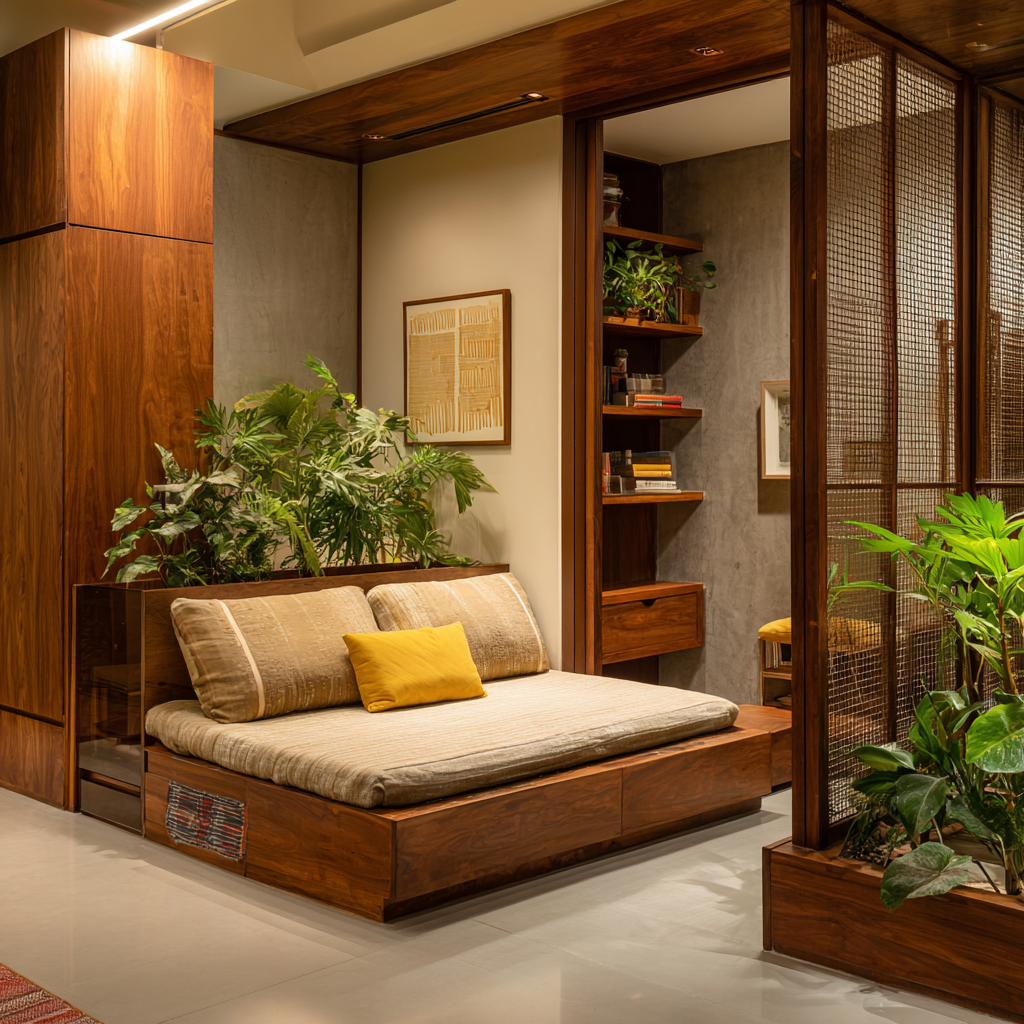
Global Trends and Design Voices
Globally, cities like Tokyo, New York, Hong Kong, and increasingly Indian metros like Bengaluru and Delhi are embracing micro-living and compact office solutions. Designers such as Nendo, Michael KChen, and India’s Studio Lotus have redefined how small footprints can yield outsized design impact. Recent projects such as the 260-square-foot Urban Cabin by MINI Living or the compact live-work studios in Gurgaon's new co-living developments exemplify a growing appetite for minimalism that does not compromise on comfort or creativity. The most impactful designs are those that treat spatial constraints not as problems to be solved, but as frameworks for storytelling—where each element plays a role, and nothing is superfluous.
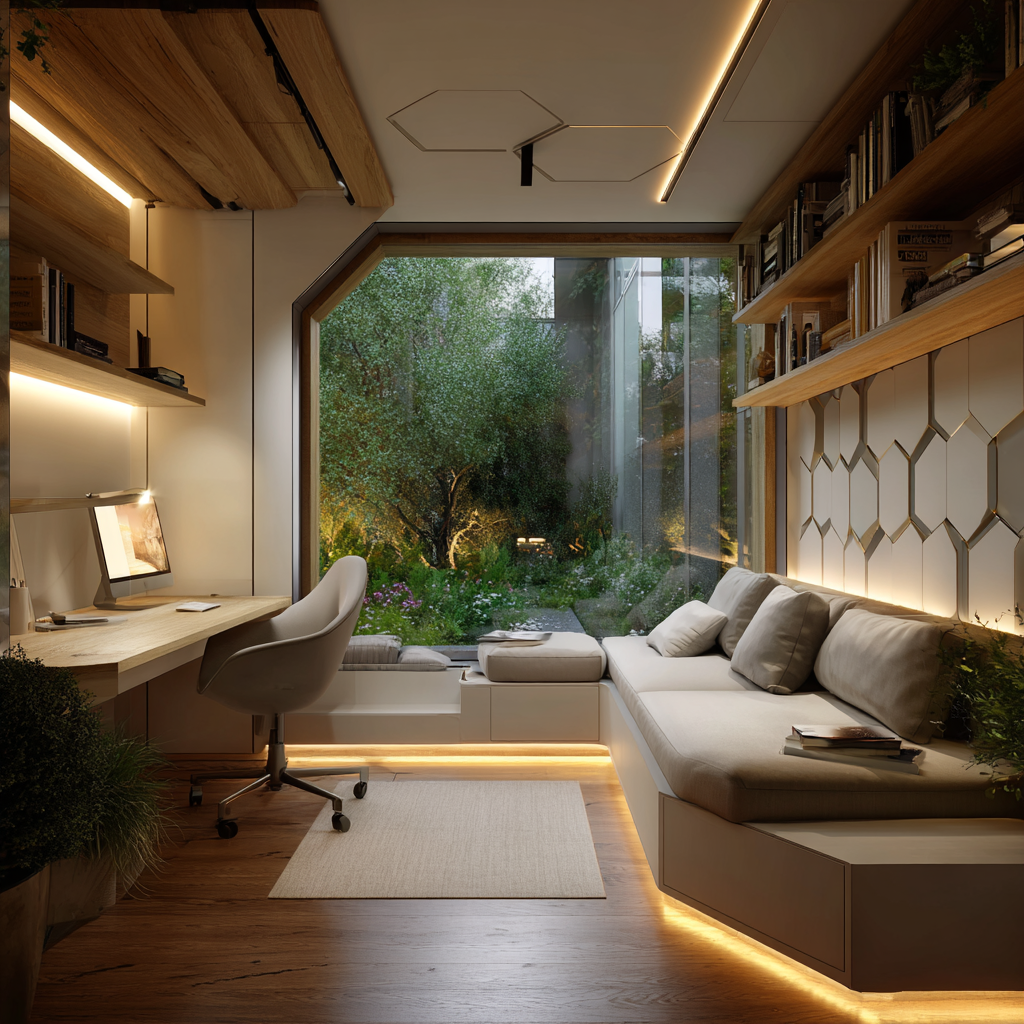
Applications in Indian Interiors
Real-world application is where theory meets terrain. In India, where Vastu Shastra often intersects with design programming, the challenge of maximizing small spaces is uniquely cultural. A600-square-foot apartment in Mumbai, for instance, may need to accommodate multi-generational living, ritual spaces, and hybrid work zones—each demanding both privacy and fluidity. Here, the use of sliding partitions, lofted storage, floor-sitting arrangements, and foldable furniture becomes not merely convenient but essential. In offices, the rise of hot-desking and co-working hubs necessitates agile spatial design: think acoustic pods that double as video call booths, modular conference tables, and breakout zones that can morph based on occupancy.
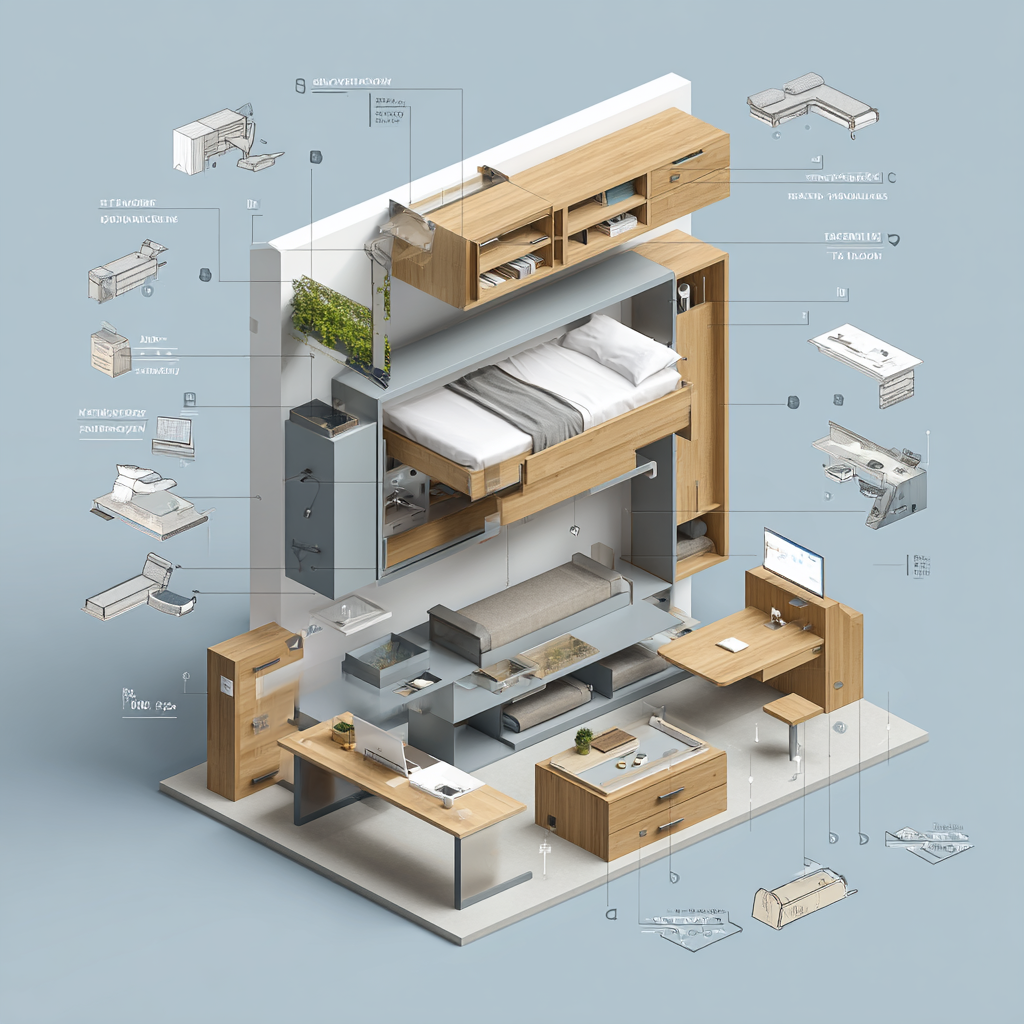
Materials and Technologies Driving Innovation
The materials and technologies enabling this transformation are equally revolutionary. Lightweight composites, such as honeycomb panels and engineered wood, allow for structural strength without bulk. Smart glass and reactive surfaces create dynamic environments that can shift opacity or display information based on context. Technological integrations—IoT-enabled lighting, temperature zoning, and responsive furniture—add layers of customization and efficiency. In the Indian context, sustainable materials like bamboo ply, recycled aluminum, and terracotta are gaining popularity for their low carbon footprint and cultural resonance, offering both form and function in equal measure.
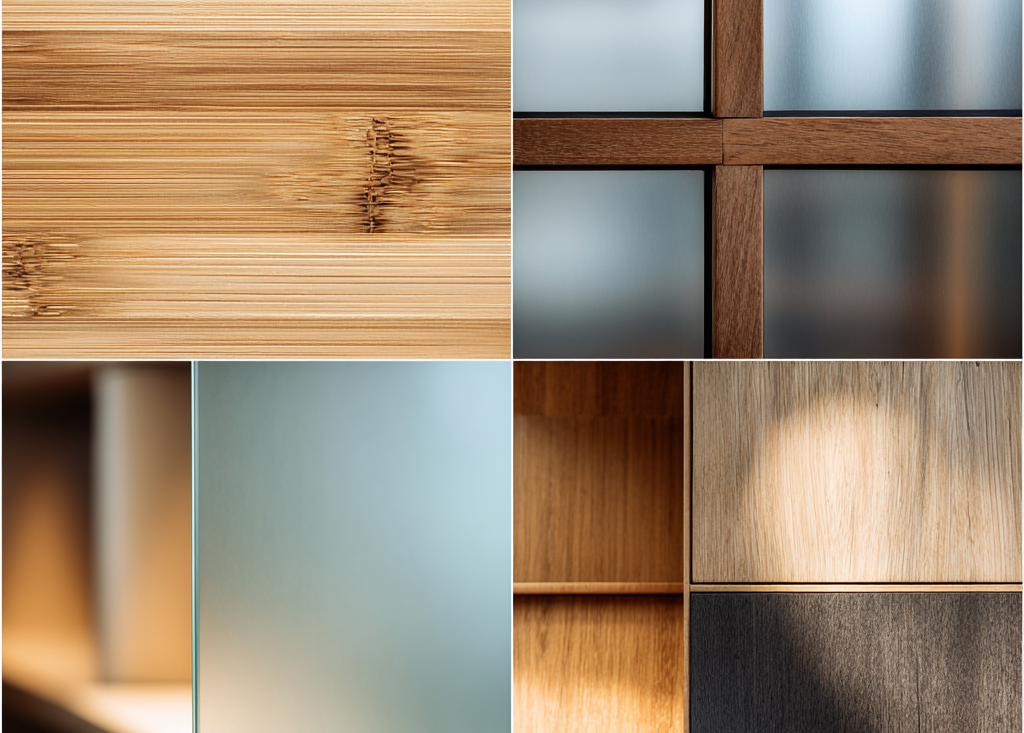
Challenges and Solutions
Despite its aesthetic appeal, designing for small spaces is rife with challenges. The foremost is spatial psychology: how to make small feel expansive. This is tackled through clever use of color palettes, reflective surfaces, layered lighting, and sightlines that draw the eye beyond immediate barriers. Another critical consideration is budget. While compact designs may appear cost-effective, the bespoke nature of foldable or modular furniture, as well as the need for precision in execution, can inflate costs. Moreover, technical constraints—such as load-bearing limitations, ventilation requirements, and acoustics—require meticulous planning and interdisciplinary collaboration between architects, engineers, and interior designers.
Looking Ahead: The Future of Small Space Design
The future of small space design is both exciting and inevitable. With urbanization projected to increase, especially in the Global South, the emphasis on compact, intelligent design will deepen. Concepts like robotic furniture, AI-driven layout optimization, and virtual reality modeling are not far-off visions but emerging realities. The merging of data-driven spatial planning with artisanal design sensibilities opens a fertile ground for experimentation. Policy frameworks and real estate development models must also evolve to support innovation—through zoning reforms, incentives for compact housing, and partnerships with design schools and technology incubators.
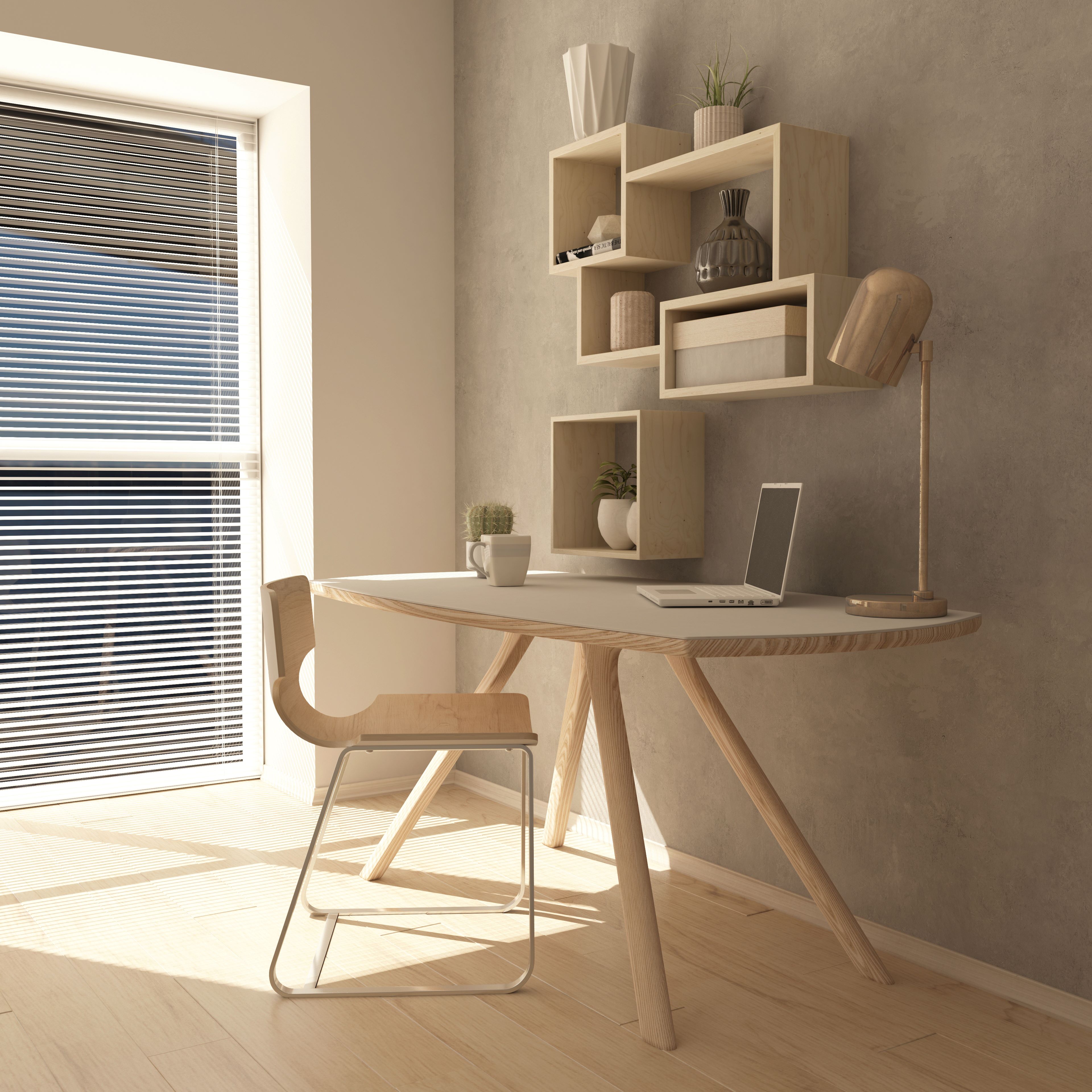
Conclusion
Maximizing small spaces is no longer a sub-genre of design; it is the crucible where innovation, necessity, and creativity converge. As urban centers become denser and the demand for adaptable, beautiful interiors grows, the role of the designer evolves from aesthetic curator to spatial strategist. The mastery lies not in making do with less, but in revealing how less can be more—and sometimes, even extraordinary. From reconfigurable floor plans to intelligent materials, from ancient spatial wisdom to futuristic tech interventions, the solutions for compact living and working are as diverse as they are inspiring. For architects, interior designers, and project managers, the challenge is not just technical or financial—it is philosophical: How do we design not just for space, but for the life that unfolds within it?

.jpg)